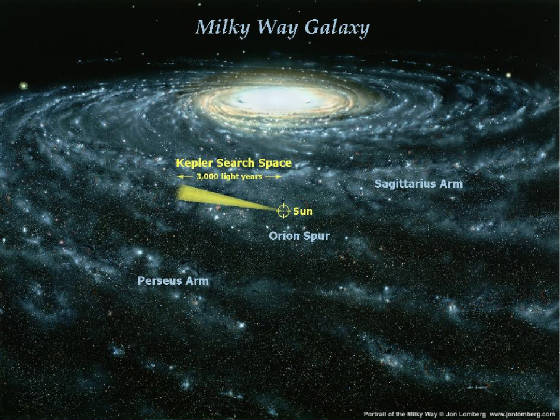|
The Kepler "telescope" is not the usual sort of optical instrument.
It is a special photometer (light meter) with a large field of view, in order to allow for the observation of a large number
of stars.
The photometer (through the "local detector" electronics) detects tiny changes
in light that is received from observed stars, on the primary mirror. (Successful detection by this method and by other
means have now shown us that there are thousands of planets out there, traveling around other stars.)

The above image is an artist's rendering of the target region of the Kepler
instrument.
KEPLER DETECTIONS
Two planets have been discovered (Aug., 2010) orbiting a sun-like
star given the designation "Kepler-9." They are Saturn-sized planets and this is the first star system we have found
that has simultaneous multiple transiting planets.
Since then, many thousands of planets have been
discovered. And new instruments are being developed that are expected to detect planetary atmospheres and their composition.
If the chemistry is present that indicates life, intelligent
or otherwise, we are going to begin to be able to detect such facts.
It is truly an amazing time of discovery for all of Humankind.
All images are courtesy of NASA
and/or associated agencies
and institutions.
Members have direct
phone contact and receive special opportunities, newsletters, etc.
|

